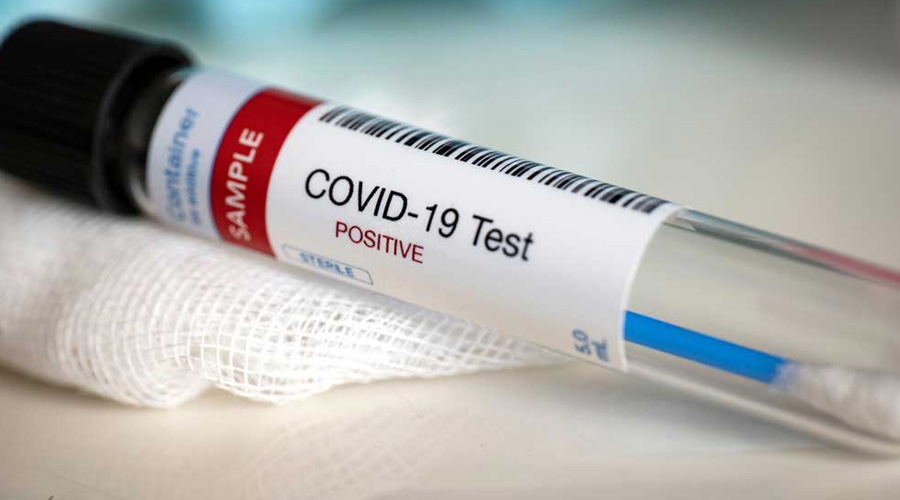
India records weeklong fall in counts of active patients
Health officials and doctors remain worried that limited rural testing and widespread epidemics in 22 states are hiding a vast reservoir of uncounted infections

Alongside a decline in daily new infections, the count of active patients fell to 3.22 million from 3.71 million on May 13, but experts fear the virus is spreading undetected in at least 22 states, including Bengal, and rural areas bereft of testing facilities.
The main purpose of testing is to isolate positive cases early and block the chain of transmission.
The Indian Council of Medical Research (ICMR) has projected a plan to increase the country’s Covid-19 diagnostic capacity from the current 3 million daily tests to 4.5 million by June-end, underscoring the need to rapidly ramp up testing in rural areas.
For rural areas, the health research agency has “encouraged” the deployment of rapid antigen tests (RATs) in each of an estimated 187,000 primary health centres and other rural-level health facilities, ICMR director-general Balram Bhargava said.
A health policy specialist said the plan to augment diagnostic capacity was overdue.
“This should have been done before the second wave started,” said Rijo John, an adjunct professor for health economics and development studies at the Raragiri College of Social Sciences in Kochi, Kerala.
Doctors and health experts say that information about how Covid-19 has impacted rural India is largely based on anecdotal accounts in the absence of any disaggregated government data differentiating patterns of epidemics in rural and urban areas.
Arvinder Singh Soin, a senior liver transplantation surgeon at Medanta Hospital in Gurgaon, Haryana, tweeted on Thursday to say he’s “terribly worried that there is a Covid surge in rural India that is going largely unchecked and undetected”.
Soin said he had heard troubling accounts of the conditions in rural areas from some patients who’ve consulted him over the past two or three weeks.
“In many such places, patients say there are no testing facilities. Patients develop fever, some use phones for teleconsultations, some get medicines,” Soin told The Telegraph.
“Treatment, testing and vaccination — it’s very patchy across rural areas,” said Soin, who typically has roughly a third of his patients from rural areas in Haryana, Punjab or Uttar Pradesh.
Many experts are concerned that under limited testing, the rural epidemic will remain invisible.
“Local responses need strong data about the local epidemic. Without access to tests, how will district
authorities even know the extent of the burden in their areas?” asked Oommen John, a physician and senior researcher at The George Institute for Global Health, New Delhi.
“Anecdotal reports indicate that due to a surge in cases, doctors from rural areas have fled from their places of usual practice, leaving people to fend for themselves.”
The ICMR is hoping India will augment its diagnostic capacity through RATs in public health facilities, mobile testing vans moving every day from village to village, and home-based do-it-yourself test kits, the first of which was approved on Wednesday.
The epidemic’s current patterns suggest an urgent need for India to scale up testing nationwide, in urban and rural areas.
Twenty-two states currently have a test positivity rate — the fraction of positive cases among those tested — greater than 15 per cent, instead of the ideal below 5 per cent.
A high test positivity rate implies widespread infections and inadequate testing. Andhra Pradesh, Bengal, Goa, Karnataka and Tamil Nadu are among 10 states with a test positivity rate greater than 24 per cent.
“In all such areas, testing has to be increased until the positivity rate falls below 5 per cent,” said Lav Agarwal, joint secretary in the health ministry.

0 Response to "India records weeklong fall in counts of active patients"
Post a Comment
Disclaimer Note:
The views expressed in the articles published here are solely those of the author and do not necessarily reflect the official policy, position, or perspective of Kalimpong News or KalimNews. Kalimpong News and KalimNews disclaim all liability for the published or posted articles, news, and information and assume no responsibility for the accuracy or validity of the content.
Kalimpong News is a non-profit online news platform managed by KalimNews and operated under the Kalimpong Press Club.
Comment Policy:
We encourage respectful and constructive discussions. Please ensure decency while commenting and register with your email ID to participate.
Note: only a member of this blog may post a comment.